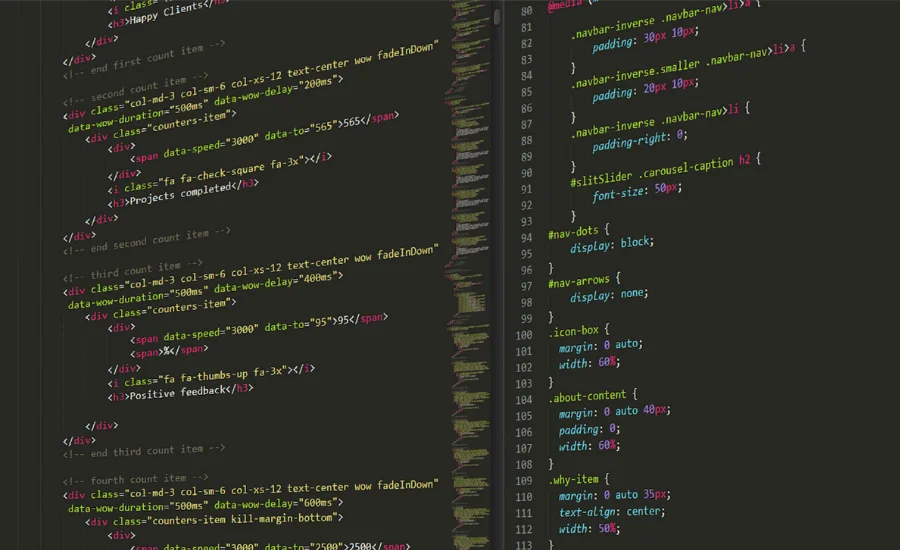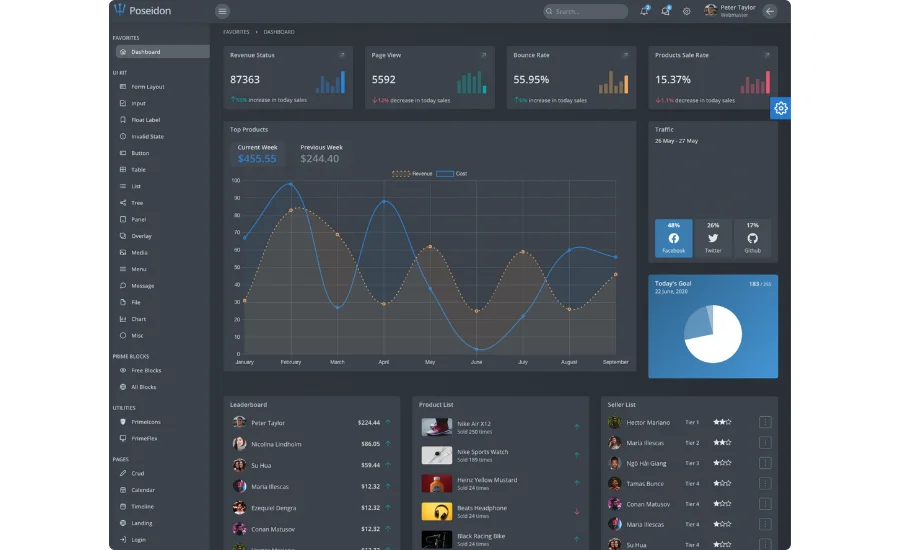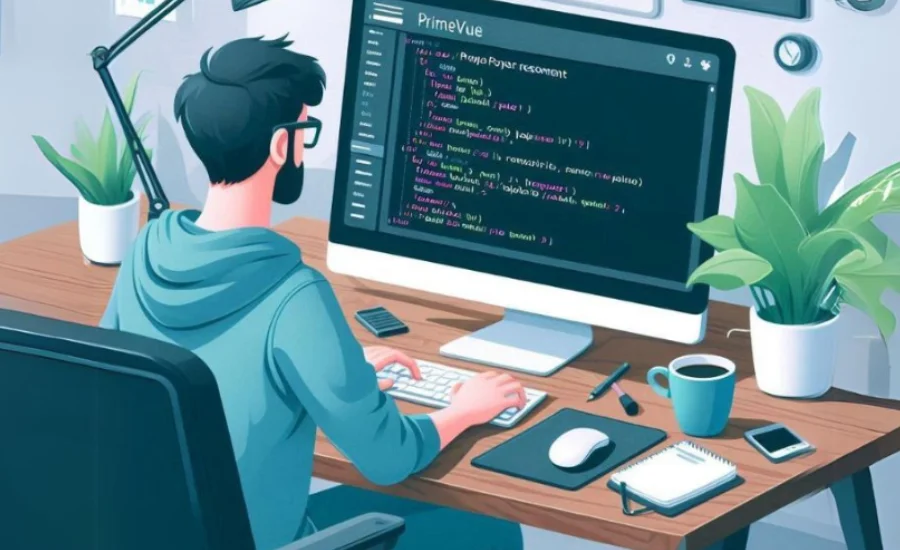Popover Component Not Screen Responsive PrimeVue For developers hoping to provide a flawless user experience, PrimeVue’s non-responsive popover component might pose serious problems. When used on several platforms, especially smaller screens like tablets and smartphones, the popover can not show up properly, making it more difficult for users to obtain important information.
PrimeVue is widely appreciated for its rich set of features that enhance application development. However, if the popover component fails to adjust responsively, it can detract from the overall polish and usability of the application. This misalignment not only affects aesthetics but can also frustrate users, ultimately impacting engagement.
Understanding the root causes of this responsiveness issue is crucial for developers. Factors such as CSS styling, container dimensions, and viewport settings can all contribute to the problem. By identifying these elements and implementing appropriate solutions, developers can ensure that the popover component functions effectively across all screen sizes.
In this exploration, we will delve into the reasons behind the non-responsive behavior of the popover in PrimeVue and discuss actionable strategies to enhance its responsiveness. Together, we can work towards improving the usability of our applications and delivering a more polished user experience.
Exploring the PrimeVue Popover Component: Enhancing Responsiveness for Better User Experience

Popover Component Not Screen Responsive PrimeVue:A popover serves as a compact overlay element that delivers contextual Information or actions without interrupting the user’s current view. Similar to a tooltip, a popover offers more space for content and interactivity, making it an effective tool for enhancing user engagement. PrimeVue’s popover component stands out for its high level of customization, making it a favorite among Vue.js developers looking to enrich their applications.
Despite its flexibility and utility, managing the responsiveness of the popover can present challenges. When developers aim to implement this component across various devices, it often requires careful consideration to ensure that it behaves as expected on screens of different sizes. Addressing these responsiveness issues is crucial for creating a polished and user-friendly experience.
In this discussion, we will focus on the intricacies of the PrimeVue popover component, specifically its responsiveness challenges, and provide insights into effective strategies for overcoming these obstacles. By doing so, we aim to empower developers to harness the full potential of this versatile component, ultimately leading to a more intuitive and seamless application experience.
Understanding PrimeVue: Benefits and Challenges of the Popover Component
Popover Component Not Screen Responsive PrimeVue is a widely used library designed to facilitate the creation of visually appealing user interfaces. With a diverse range of components, including buttons, forms, and more, it simplifies the web development process, allowing developers to build applications efficiently. This efficiency is one of the key reasons why PrimeVue is favored among developers, as it significantly reduces the time and effort required for design and implementation.
However, while Popover Component Not Screen Responsive PrimeVue numerous advantages, not all components function flawlessly. One notable challenge is the responsiveness of the popover component.When a feature is not responsive to screen sizes, it can negatively impact the user experience and make it more difficult for users to interact with your website.
It is imperative for developers to comprehend both the advantages and disadvantages of PrimeVue in order to optimize its capabilities and mitigate any constraints. Developers that are aware of these factors can make well-informed choices and design user interfaces that work flawlessly across a variety of devices.
Addressing Responsiveness Issues with the PrimeVue Popover Component
Many developers encounter challenges with the responsiveness of the popover component in PrimeVue.One common problem is that the popover’s fixed size causes it to be truncated or cut off when seen on smaller displays. Users may experience frustration as a result of this since important information could become unavailable.
Furthermore, users may experience issues with the popover’s visibility, such as its inappropriate positioning on the screen.Such misalignments can obscure essential content, ultimately hindering user interaction and engagement. These responsiveness problems underscore the necessity for prompt and effective solutions to ensure that the popover component functions seamlessly across all device sizes.
By addressing these challenges, developers can enhance the overall usability of their applications, ensuring that users can access important information without interruption, regardless of the device they are using.
Understanding the Responsiveness Challenges of the PrimeVue Popover Component
So, what causes the PrimeVue popover component to lack screen responsiveness? One significant factor is that popovers are designed to maintain a fixed position in relation to a target element. This design choice can create misalignment or overflow issues when the screen size is altered. Imagine trying to fit a large popover into the limited space of a small smartphone screen—it’s akin to forcing a square peg into a round hole!
When screen dimensions shift, the popover may not adjust appropriately, leading to situations where essential content becomes hidden or cut off. This can compromise the user experience, making it difficult for users to access vital information or interact with your application effectively. Understanding these challenges is the first step toward finding solutions that ensure the popover component functions seamlessly across various devices.
The Importance of Responsiveness in Web Design: Enhancing User Experience with Popover Components

Responsiveness is a crucial aspect of web design, ensuring that content is visually appealing and functional across all devices, whether large or small. When a popover component fails to adapt to different screen sizes, it can lead to significant user frustration.
Consider the scenario where a message is partially obscured, making it difficult for users to read.When this happens, users could decide to quit your website rather than try to find what they’re looking for. Not only can a well-crafted responsive popover improve readability, but it also maintains user engagement and satisfaction. In the end, providing a smooth and joyful user experience for every user depends on giving responsiveness top priority.
Quick Solutions for Enhancing Popover Responsiveness in PrimeVue
If you’re facing issues with your popover component not being screen responsive, there’s no need to worry. Several effective strategies can help resolve this problem.
One of the simplest solutions is to implement percentage-based widths instead of fixed sizes. This approach allows the popover to adapt seamlessly to various screen sizes, ensuring a consistent user experience across devices.
Additionally, incorporating CSS media queries is another effective method.You can apply different styles according to the size of the screen by using media queries. For example, you can quickly reduce and enhance the usability of the popover by adjusting its size for mobile devices.
These small changes can have a big impact on how responsive your popover is, which will increase user engagement and happiness in the long run.
Common Challenges with Popover Responsiveness in PrimeVue
Popover components can encounter several challenges on smaller devices that negatively impact user experience. One significant issue is overflow, where the popover may extend beyond the screen’s edges. This overflow can obscure critical content, making it difficult for users to access important information.
Another challenge arises from positioning. On smaller screens, the default placement of popovers may result in them appearing misaligned or even outside the visible area of the screen. This misalignment occurs when the component does not adjust properly to accommodate reduced screen dimensions.
Additionally, PrimeVue’s standard configuration may lack adequate media query support, which is essential for handling various screen sizes. As a result, popovers may not be as responsive as needed right out of the box. By addressing these common issues, developers can enhance the usability and accessibility of their applications.
The Importance of Testing Popover Components in Web Development
Testing is a crucial part of developing websites, especially for elements like popovers. In order to guarantee the best possible user experience, it is imperative to assess the popover’s behavior on a range of platforms, such as PCs, tablets, and smartphones.
During the testing process, using real devices in addition to simulators might yield insightful results. Pay attention to the popover’s appearance and placement as you evaluate it to spot any possible problems. This comprehensive testing strategy is essential for identifying issues that might not be obvious at first.
Developers can ensure that every user has a smooth and enjoyable experience with the application by giving testing top priority. In the end, successful testing improves usability while also adding to the overall caliber and accomplishment of the online project.
Understanding the Importance of Responsive Popovers Through Examples
To grasp the significance of responsive design in popover components, let’s consider a few examples. A well-designed responsive popover adjusts seamlessly to fit on a smartphone screen. It ensures that essential buttons remain visible and easily accessible, providing users with clear and readable content. This thoughtful design approach fosters a comfortable user experience, encouraging engagement.
Conversely, a non-responsive popover can create frustration for users. If it is excessively wide or cuts off important text, navigating the interface becomes challenging. This can lead to confusion and a negative perception of the application.
By examining these contrasting scenarios, it becomes clear that prioritizing responsive design in popovers is crucial. Ensuring that popovers adapt to various screen sizes not only enhances usability but also contributes to an overall positive user experience.
Read More: Bobby Fish Art Filsinger
Essential Tips for Creating a Responsive User Interface

Crafting a responsive user interface is a skill that develops over time, and several strategies can guide you along the way. Start by thoroughly testing your components across various devices to ensure they function properly on different screen sizes. This practice is essential for identifying any layout issues early on.
Next, embrace flexible design principles by utilizing percentage-based dimensions instead of fixed sizes. This allows your elements to adapt gracefully to varying screen dimensions. Additionally, consider implementing grid layouts to enhance content organization, making your interface cleaner and more intuitive.
Lastly, to provide the best possible display and usability across all devices, use media queries to customize styles for particular screen sizes. You may design a responsive user interface (UI) that offers a great cross-platform user experience in addition to being aesthetically pleasing by incorporating these techniques into your development process.
Final Words
Popover Component Not Screen Responsive PrimeVue In web development, ensuring that every component is responsive is crucial for delivering a seamless user experience, and the popover component in PrimeVue is no exception. When popovers are not screen responsive, they can obstruct essential content, misalign on smaller devices, or become entirely invisible, leading to frustration among users.
Understanding the underlying reasons for these issues—such as fixed dimensions, positioning errors, and a lack of media query support—is the first step toward effective solutions. By adopting flexible design strategies, utilizing media queries, and thoroughly testing across devices, developers can create a more adaptive popover component that enhances user engagement. Ultimately, prioritizing responsiveness in all aspects of web design will ensure that your applications are user-friendly and visually appealing on any device.
For More Information Check It Out Discover Out
